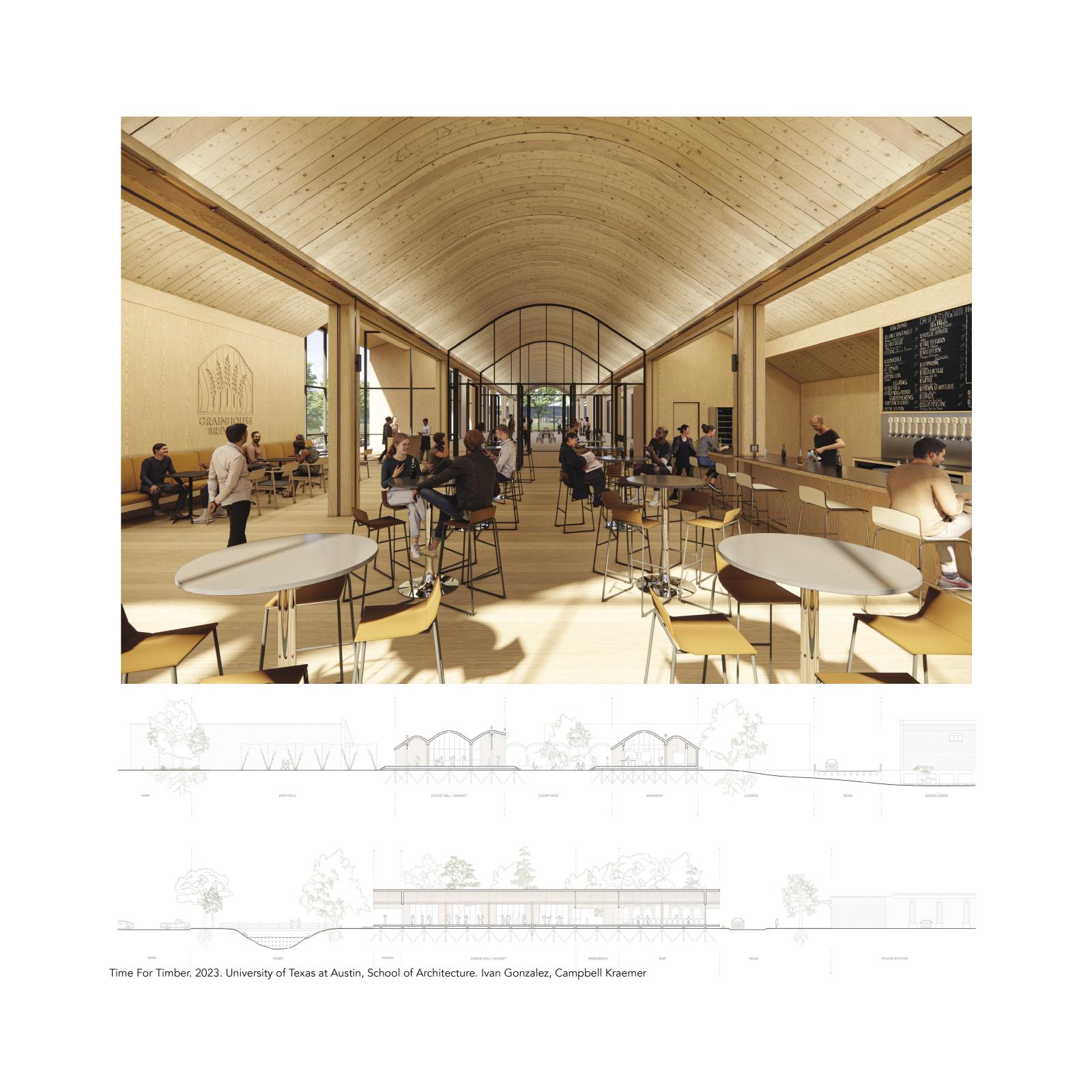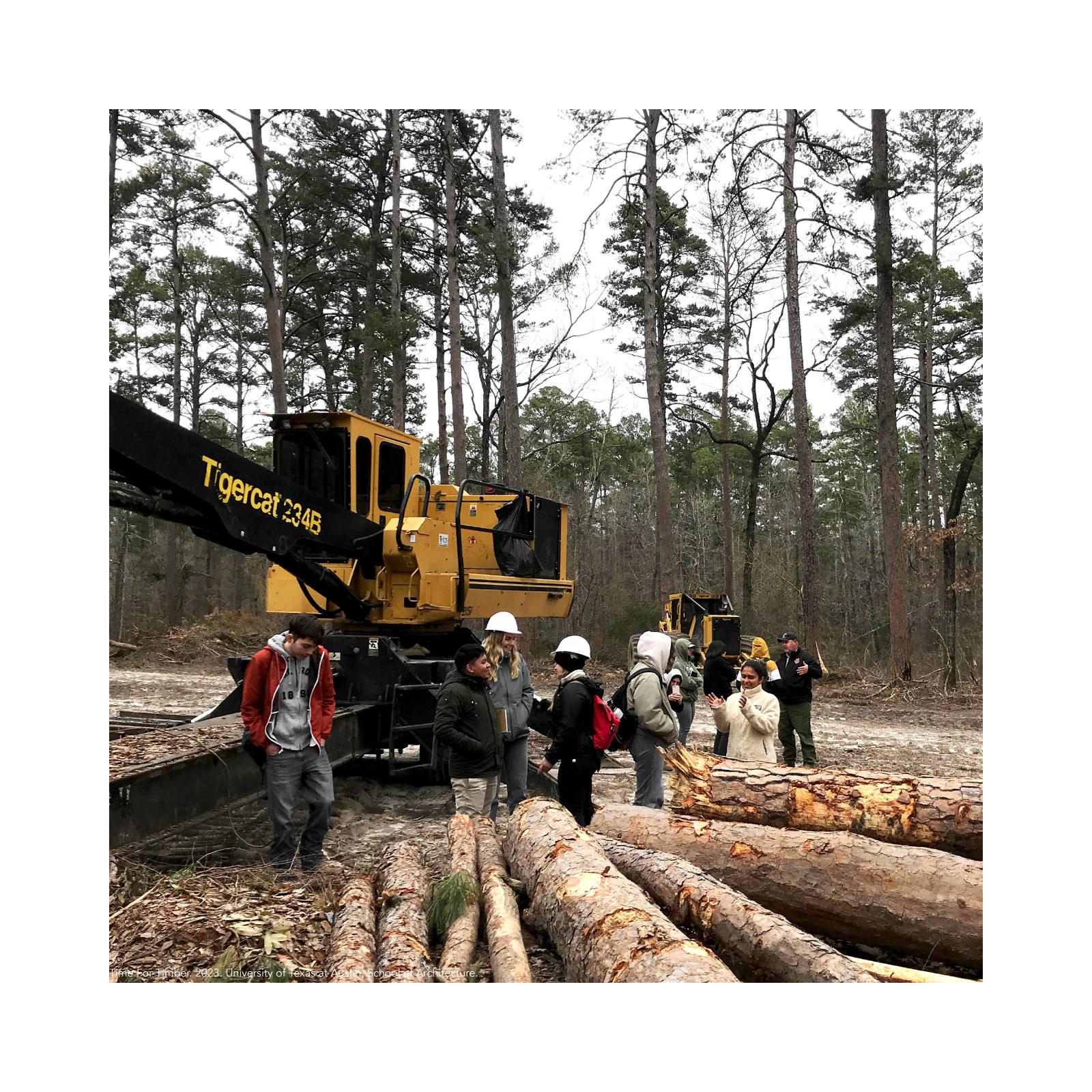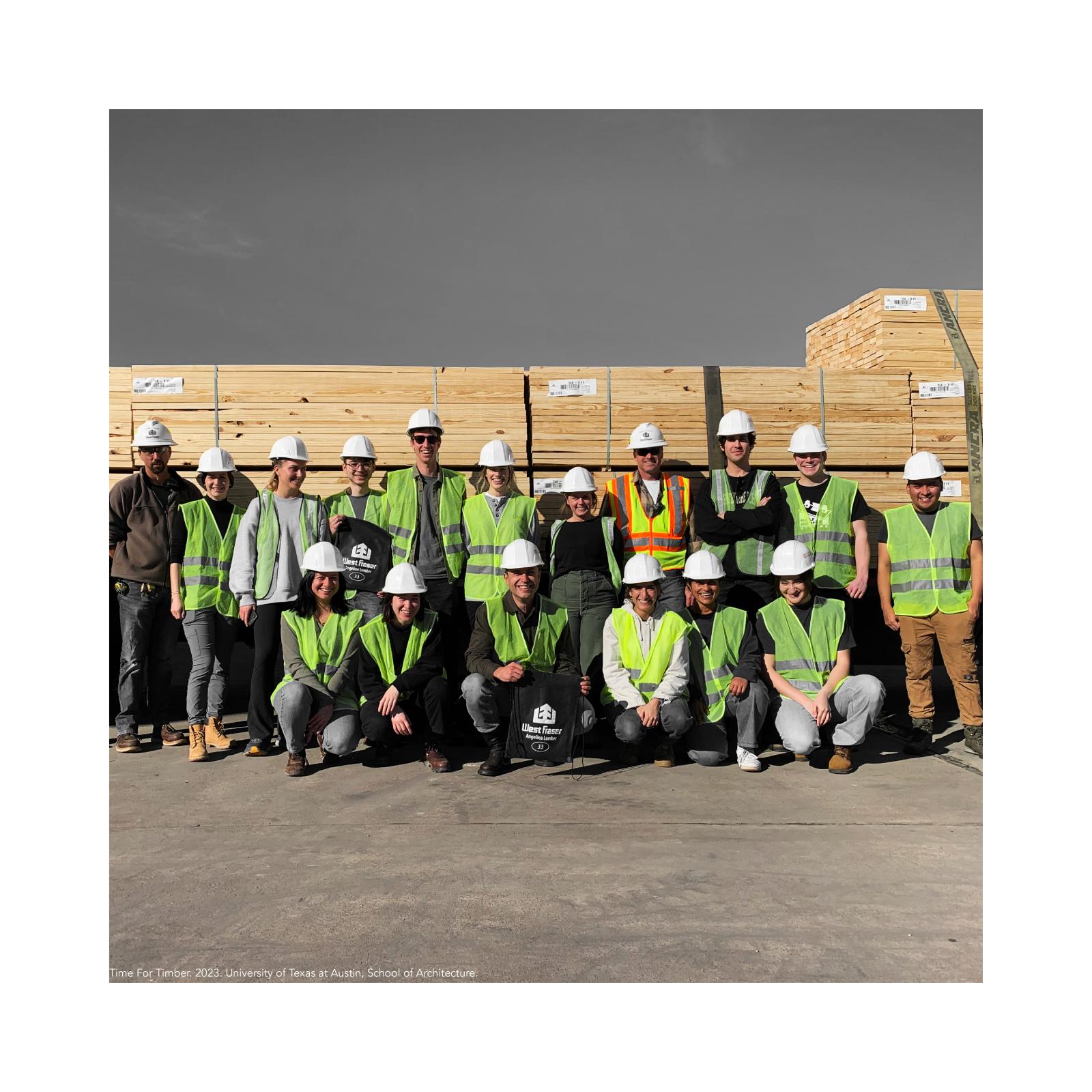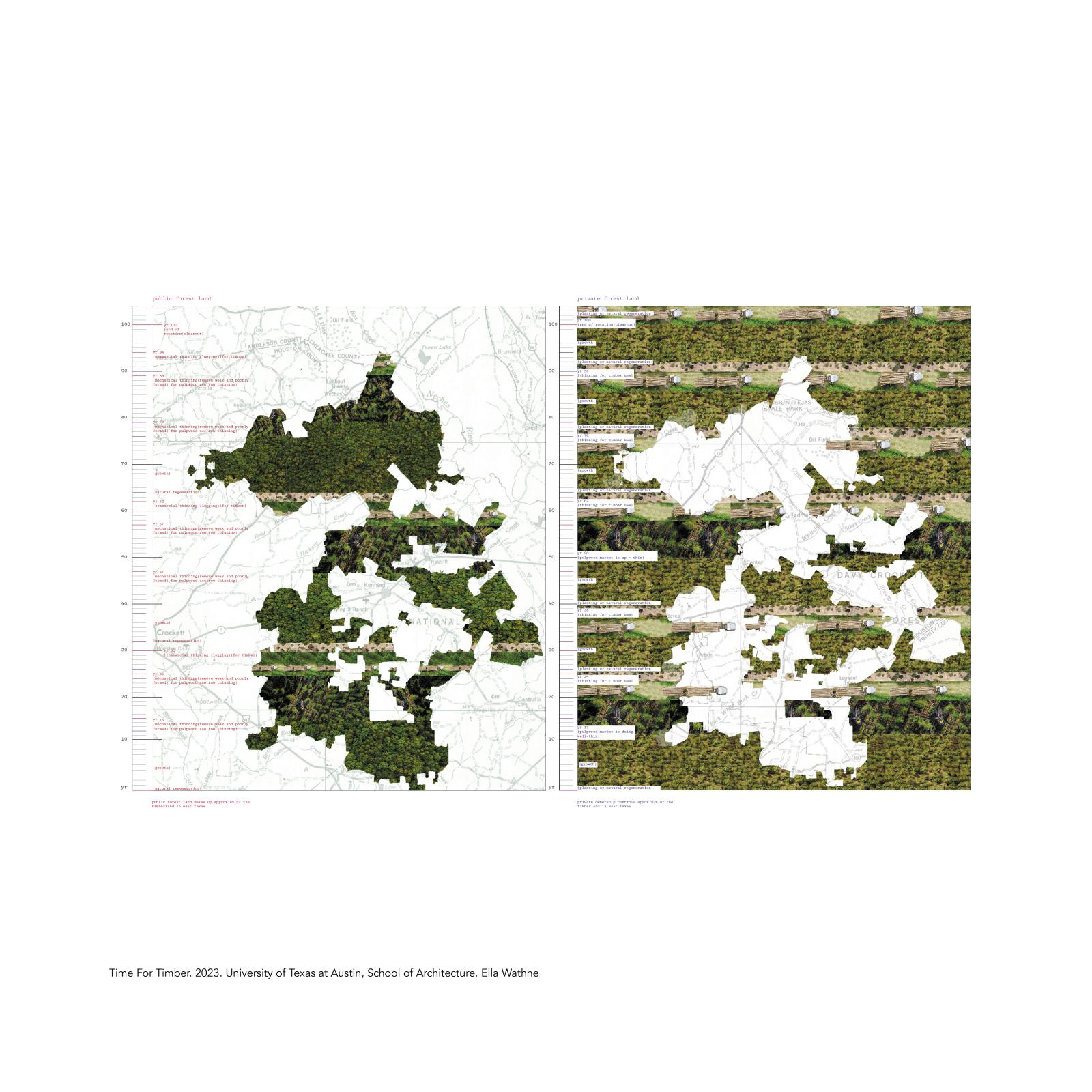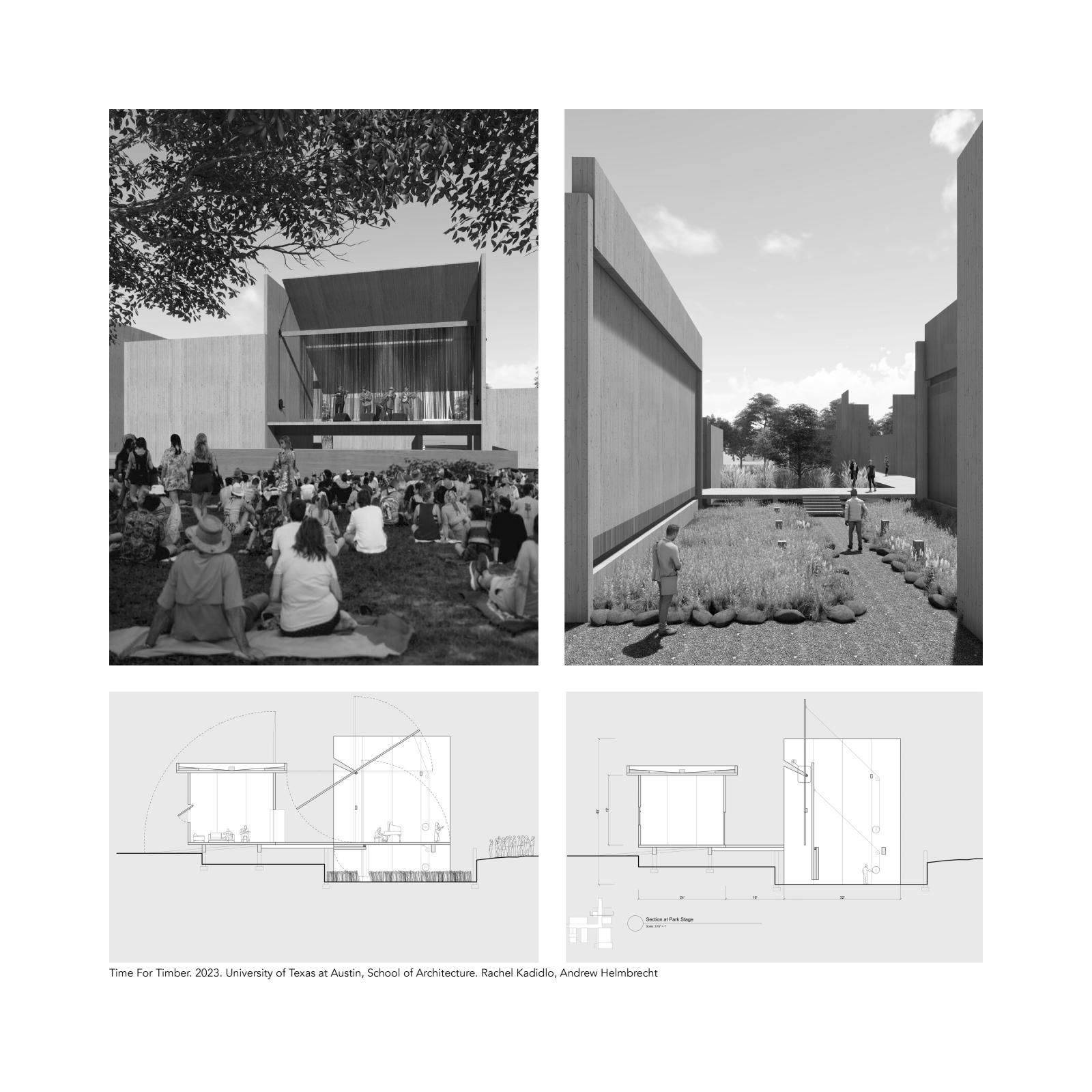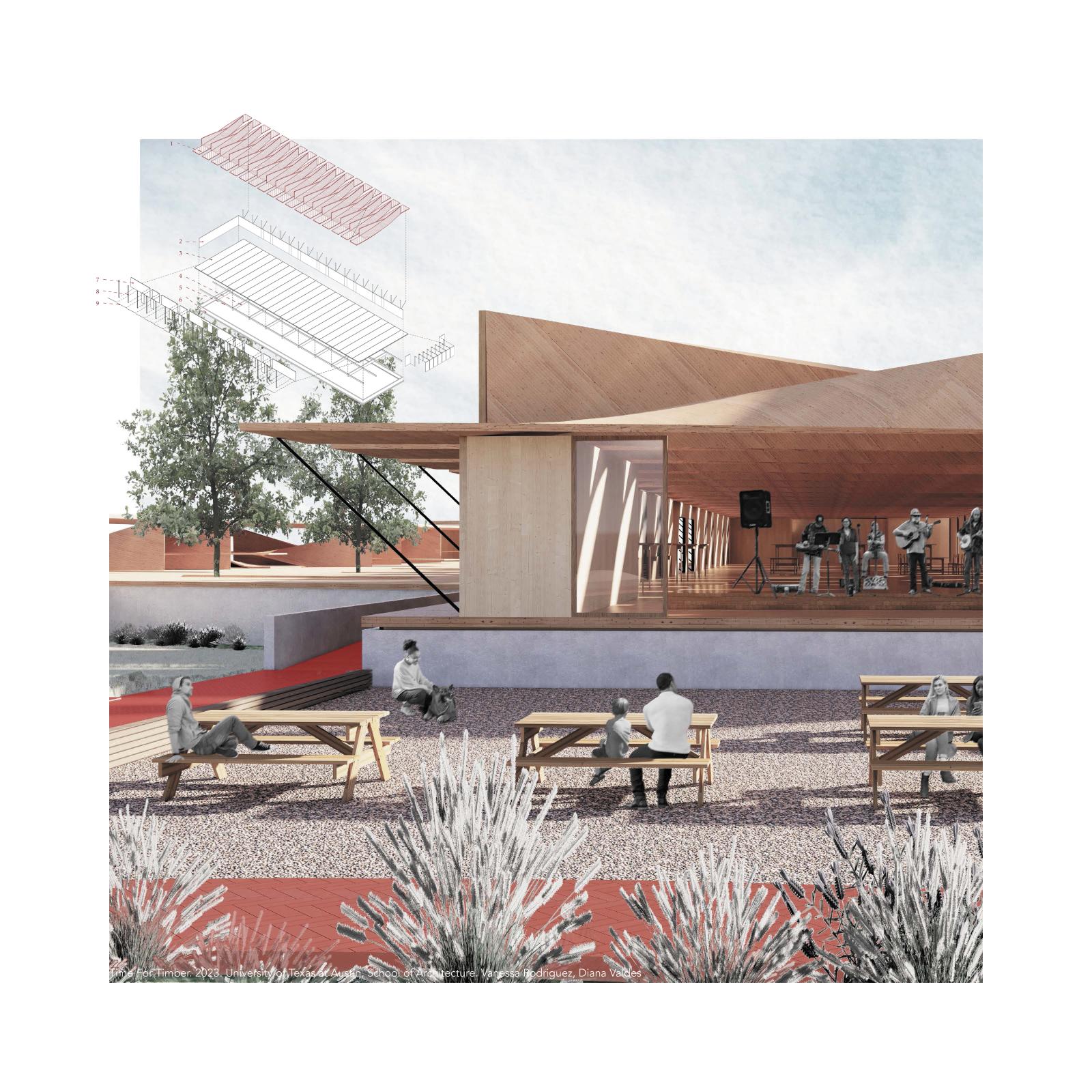Time for Timber: Exploring the Forest and the Built Environment
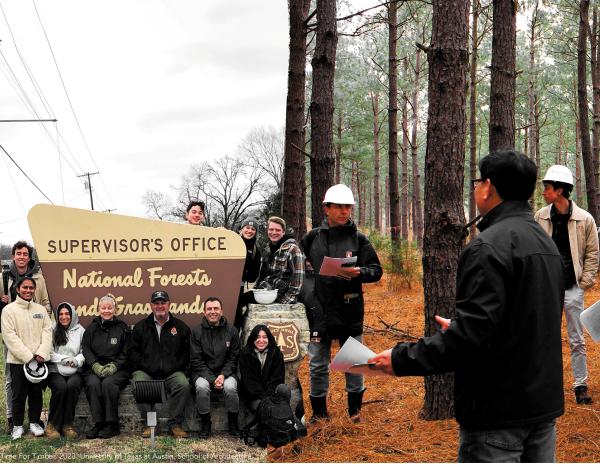
Last semester’s “Time for Timber” studio taught by 2022-2024 Emerging Scholar Tyler Swingle has received an Honorable Mention in the Association of Collegiate Schools of Architecture (ACSA) and the Softwood Lumber Board’s 2023 Timber Education Prize.
Launched in 2022, the Timber Education Prize recognizes curricula that create a stimulating and evidence-based environment for learning about timber—equipping students with an understanding of wood as a building material that can achieve multiple design, construction, and performance objectives. Swingle’s studio is one of two honorable mentions, with only five winners selected from architecture schools across North America.
As a material, wood is unique. It is a renewable resource with a cellular structure that offers a variety of abilities to swell, shrink, bend, and absorb in a responsive manner. Further, its ability to sequester carbon, regrow in cycles, flex for adaption and reuse, and provide unique warm aesthetics sets it apart from other architectural materials. However, as a standardized and mass-produced tool for construction, the uniqueness of wood as an architectural material and a building resource is underused and underdeveloped.
In dialogue with the timber industry of East Texas and existing material research, Swingle’s studio, which was open to both architecture and interior design students, sought to decouple wood as a tool from the expected production and construction methods of contemporary architecture. Rather than conforming to conventional timber construction, students were tasked with developing new formal and performative designs that emphasized the unique material characteristics of wood, and speculated on new timber construction standards.
Initially, students focused on understanding, interpreting, and evolving current timber research within architecture—developing a rigorous, experimental design methodology for evaluating the possibilities of wood construction. Students worked between digital and physical models to simulate innovative wooden construction methods, and then considered their implications for architecture and architectural spaces as a generative design exercise.
As a studio, they then traveled to the Angelina National Forest in East Texas to trace timber as it transforms from forest to forest product. During the visit, they met with members of the National Forest Service and local industries to develop a holistic understanding of the relationships between the forest, forest construction products, and the built environment. The resulting knowledge helped students understand and communicate the complexities of timber, both as a local building material and as a strategy for future forests, to enable adaptive and resilient design principles.
From there, students designed their own architectural projects that engaged the local network entanglements and the material processes in the National Forests of East Texas—facilitating a working contradiction between forest conservation and extraction, and engaging the social, economic, and ecological complexities of East Texas.
The final designs, seen here, are simultaneously speculative and proven architecture. They are informed by questions of lifespan, reuse, and decomposition, and often combined with ideas of collectives and non-human occupants to produce a more holistic idea of an architectural program. They are tested timber construction techniques applied sensitively and strategically to specific forest ecosystems and economics. They are the possibility and productive anticipation of the need for a better understanding of both the forest and forest products within architecture.
